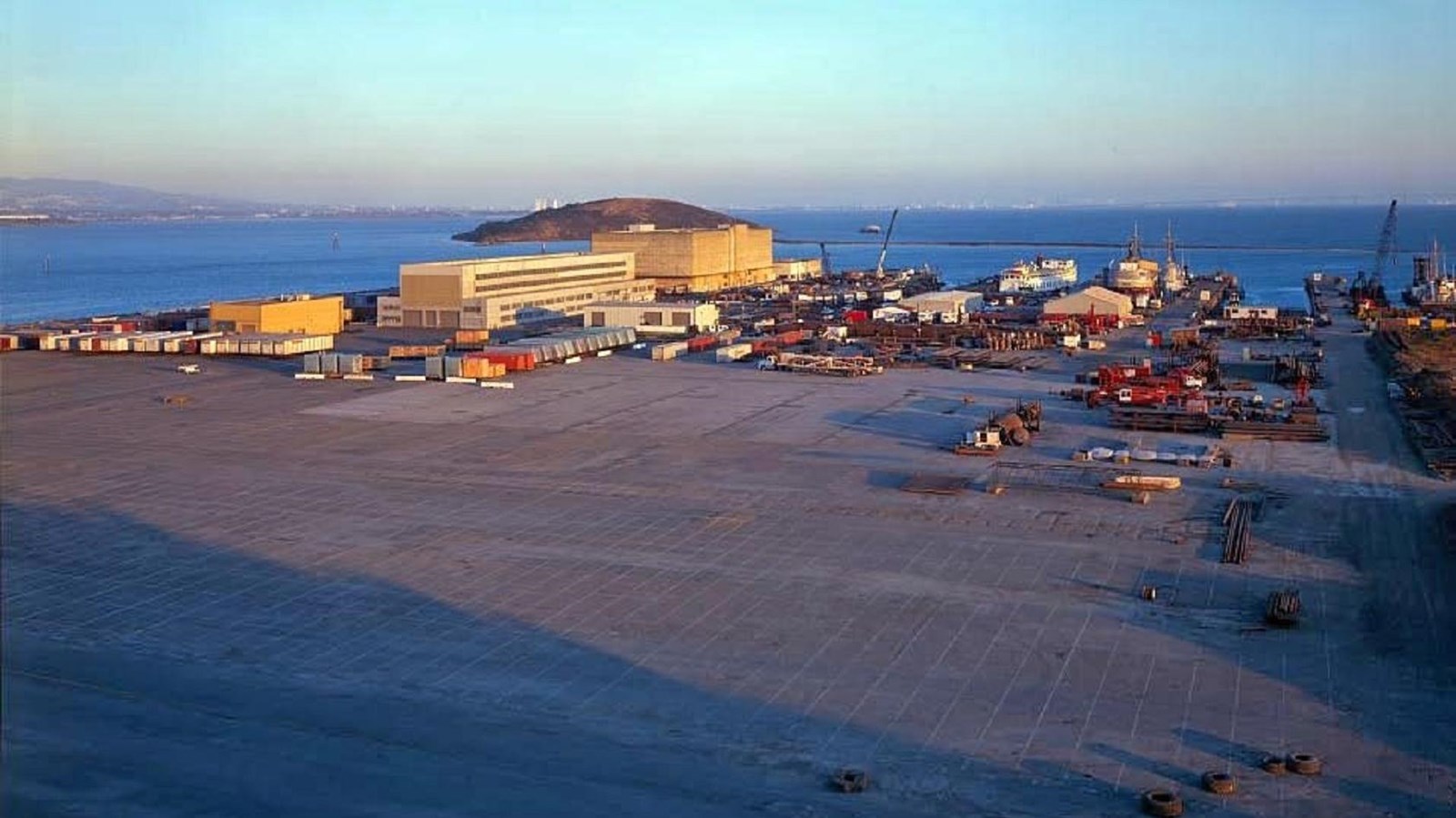Last updated: September 16, 2020
Place
Richmond Shipyard Number Three

Photo by Jet Lowe, Public Domain, https://commons.wikimedia.org/w/index.php?curid=6630157
Looking across the channel from Sheridan Observation Point at the foot of Harbour Way South, you can see some of the buildings of Henry J. Kaiser's Richmond Shipyard Number Three. The massive square concrete building is the general warehouse, from which ships received their finishing touches-- blankets, mops, brooms and all the other individual pieces of furnishings and equipment needed to completely fit out a self-contained floating vessel. On the other side of the general warehouse, but not visible, are five quays, or slips, where the ships were assembled. Henry J. Kaiser had been building cargo ships for the U.S. Maritime Commission in the 1930s, and when orders for ships from the British government, already at war with Nazi Germany, allowed for growth, Kaiser established his first Richmond shipyard begun in December 1940.
More than 747 vessels were built here in the four Richmond Kaiser Shipyards during World War II; a feat not equaled anywhere else in the world, before or since. All of Kaiser's shipyards together produced 1,490 ships, which amounted to 27 percent of the total U.S. Maritime Commission construction. These ships were completed in two-thirds the amount of time and at a quarter of the cost of the average of all other shipyards. The Liberty Ship Robert E. Perry was assembled in less than five days as a part of a special competition among shipyards; but by 1944 it was only taking the astonishingly brief time of a little over two weeks to assemble a Liberty ship by standard methods. Henry Kaiser and his workers applied mass assembly line techniques to building the ships. This production line technique, bringing pre-made parts together, moving them into place with huge cranes and having them welded together by "Rosies" (actually "Wendy the Welders" here in the shipyards), allowed unskilled laborers to do repetitive jobs requiring relatively little training to accomplish. This not only increased the speed of construction, but also the size of the mobilization effort, and in doing so, opened up jobs to women and minorities.
During WWII, thousands of men and women worked in this area everyday, in very hazardous jobs. Actively recruited by Kaiser, they came from all over the United States to swell the population of Richmond from 20,000 to over 100,000 in three short years. For many of them, this was the first time they worked and earned money. It was the first time they were faced with the problems of being working parents--finding daycare and housing. Women and minorities entered the workforce in areas previously denied to them. However, they still faced unequal pay, were shunted off into "auxiliary" unions and still had to deal with day-to-day prejudice and inequities. During the war, there were labor strikes and sit-down work stoppages that eventually led to better conditions. As one African American Rosie commented about the progress of labor and civil rights during this time, while huge gains had to wait for the post-war civil rights movement, the Home Front did "begin to shed light on America's promise."
Richmond Shipyard Number Three, part of the National Park Service's Rosie the Riveter--World War II Home Front National Historical Park, is located at the tip of Potrero Point in Richmond. The shipyard is currently closed to the public while safe methods of public access are developed. For further information, visit the park's website.
